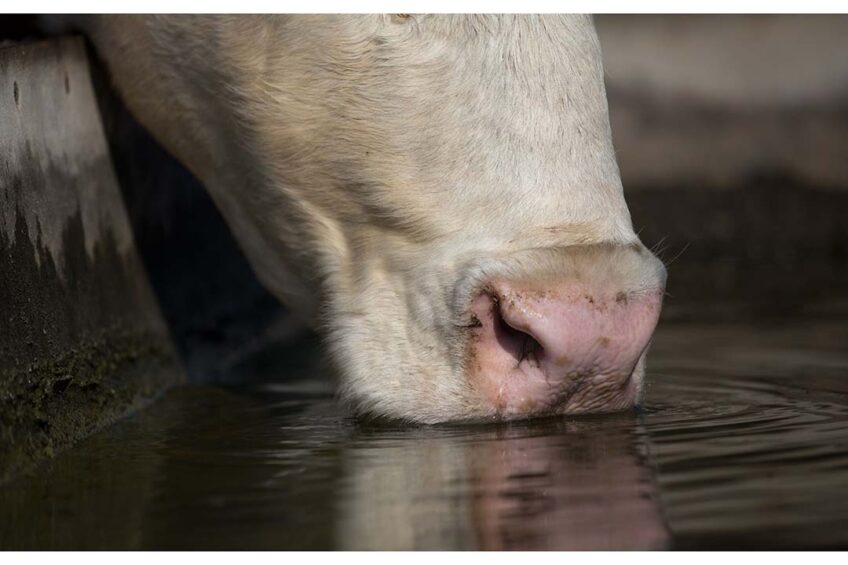What factors impact drinking behaviour in dairy cows?

Climate change endangers freshwater availability, enhances water requirement, and increases the risk of waterborne diseases in dairy cattle. These challenges require the development of coping mechanisms and water management at regional and farm levels. Therefore, analysing specific drinking behaviour indicators provides the basis for an improved water supply for dairy cows.
A team of German researchers delved into this. The team published their findings in the Journal of Animals in a research article published in January 2024. They evaluated the effect of different trough types, trough cleaning intervals, and climatic conditions on drinking behaviour and water quality in dairy cows.
Data collection
The research team selected 179 Holstein-Friesian lactating cows for this trial. Cows had access to the following troughs to drink water:
(1) Open troughs that were cleaned daily
(2) Double-valve troughs that were cleaned daily
(3) Uncleaned open troughs
(4) Uncleaned double-valve troughs.
The team ran the trail twice for 15 consecutive days: once in February representing cold ambient temperature and once in September representing warm ambient temperature. They recorded the number and duration of drinking episodes, duration of tasting period, number and duration of drinking breaks, number and duration of water intake, and number of sips.
The team then analysed dairy cows drinking behaviour for all treatment groups under 2 different climatic conditions. In addition, they sampled feedstuff and water for biological and physicochemical analysis. Furthermore, they scored the visual soiling of drinking water at each trough and measured the water temperature, and pH.
Impact of climatic conditions on drinking behaviour
Most drinking episodes occurred between 30 and 60 minutes after providing fresh TMR in both cold and warm ambient temperatures. In warm ambient temperature, cows displayed longer but fewer water intake periods, longer drinking breaks, and fewer sips compared to cold ambient temperatures. These findings suggest that dairy cows shifted their water consumption periods to cooler times of the day in warm ambient temperatures and thereby out of the recording period in the current study.
Impact of climatic conditions and trough type on drinking behaviour
During both climatic conditions, cows visited open troughs more frequently than double-valve troughs. In addition, in warm ambient temperatures, cows displayed more agonistic behaviours, interruptions due to agonistic behaviours while visiting open troughs.
Impact of climatic conditions and cleaning interval on drinking behaviour
In warm ambient temperatures, cows took fewer but longer drinking breaks, and fewer sips at both cleaned and uncleaned troughs compared to cold ambient temperatures. However, at uncleaned troughs and open troughs, cows had shorter drinking episodes even in warm ambient temperature. Furthermore, in warm ambient temperatures, the likelihoods of smelling and tasting with tongue were lower for open troughs than valve troughs due to the greater soiling of open troughs caused by different cleaning intervals.
Impact of climatic conditions and trough type on water quality
The microbial contamination level of the trough water fluctuated more and was lower in daily cleaned troughs than in uncleaned troughs. In warm ambient temperatures, the water was more frequently and heavily soiled compared to cold ambient temperatures; therefore, water contained higher levels of microbial contamination in warm ambient temperature. In addition, the total viable E. coli incubated at 36°C in all water samples from the troughs under both climatic conditions was higher than the reference values.
The authors concluded that warm ambient temperatures amplify the effect of trough type and cleanliness on an impairment of water quality and different drinking behaviours in dairy cows.
Join 13,000+ subscribers
Subscribe to our newsletter to stay updated about all the need-to-know content in the dairy sector, two times a week.










